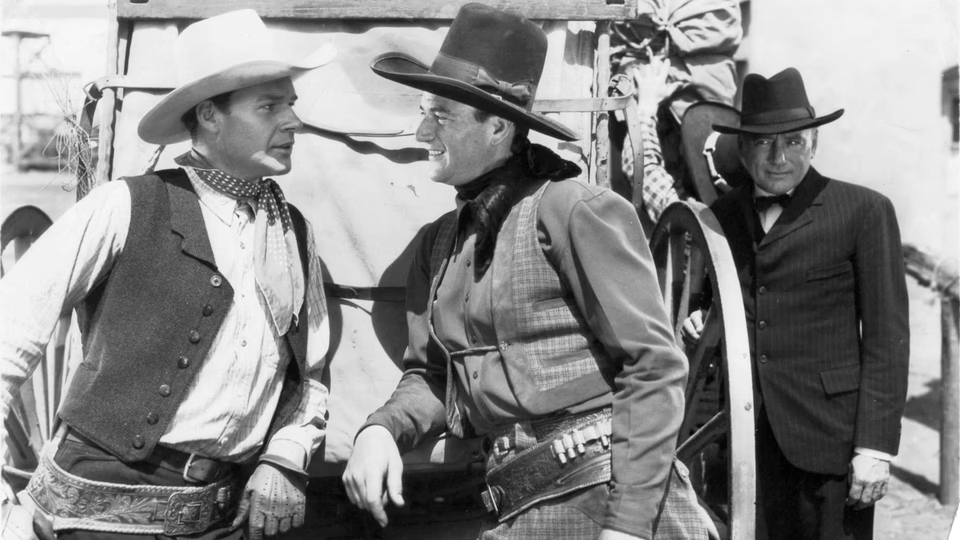Winds of the Wasteland

This Republic Pictures production sees former Pony Express riders John Wayne and Lew Kelly conned into buying a stagecoach line to a near-deserted town. Desperate, they enter a stagecoach race for a lucrative government mail contract, but they’ll need to beat the same underhanded businessman who sold them the bum line, and he’ll do anything to win.
Though not yet whole, the film sees the Duke persona coalescing. Wayne, now a veteran of dozens of productions, is learning. Watch his dialogue scenes, and you’ll see him reacting to his other performers with the expressions and body language that would later define the Duke persona. The walk is there too—that trademark determined strut. He still struggles opposite his female costar, Phyllis Fraser. Their scenes are as stiff and awkward as any of his prior work, but director Mack Wright seems to sense this and pares their scenes to a minimum.
The other star is the stunt work. Yakima Canutt (who does double duty as an uncredited henchman) delivers some thrilling scenes jumping aboard a racing stage and maneuvering around it. The stage race itself shines, conveying a genuine sense of danger as the wagons tear around curves, sometimes on three wheels. And there’s a surprising scene where the bad guys try to burn down the livery stable and—unlike some of Wayne’s prior productions—we actually see flames instead of just smoke. Indeed, the entire structure is ablaze as Wayne and company open the door and extract the stage in a seemingly dangerous shot.
But the script still bears all the poverty-row trappings, including an abundance of characters saying “There it is,” and “Here we are,” to mask transitions, and some ill-conceived attempts at comedy involving a skunk. Wright tries to compensate with some inventive camera work, including a POV shot as Wayne and Kelly ride into the deserted town, and a nice sight-gag where the villain hangs a picture of himself titled, “Honest Cal Drake,” crooked, but he can only do so much.
This marked the last picture under Wayne’s first contract with Republic Pictures. The studio had formed through the consolidation of existing poverty-row studios Monogram and Mascot. For Wayne, who’d previously worked for Monogram, little changed. He worked with the same folks and played the same kind of parts. But the productions had larger budgets. Not major-studio large, but larger than Monogram could afford. Thus, the supporting cast, while still uneven—as evidenced by Fraser—is less uneven. The production values, while low, aren’t as low, as evidenced by the livery fire scene and the larger amount of extras, sets, and horses.
Still, like all of Wayne’s poverty-row work, Winds of the Wasteland is for dedicated fans only. Wayne’s prolific career left scores of better major-studio films for the more casual fan. But, for those dipping their toe into Wayne’s early days, it marks a step up from his Monogram outings.